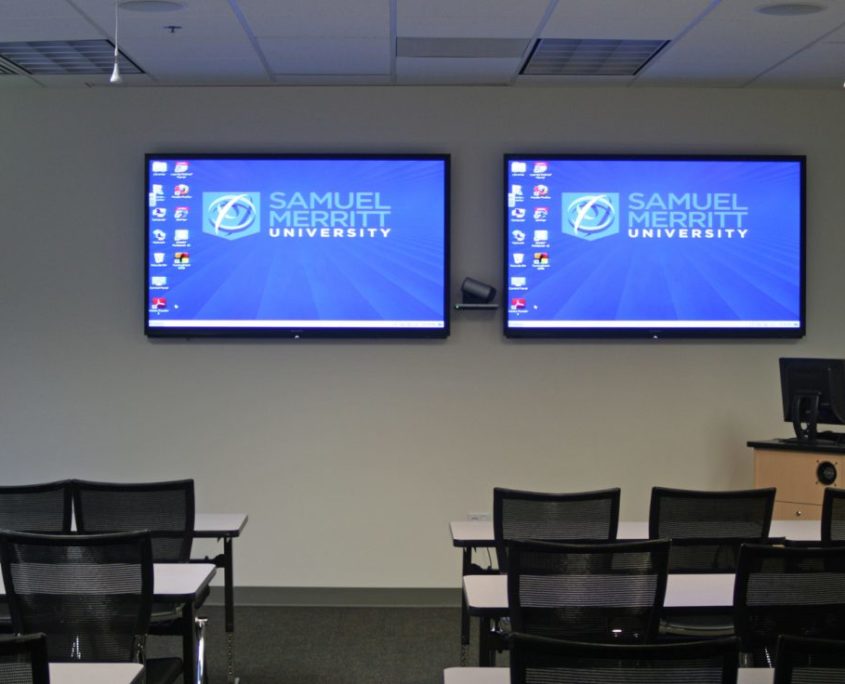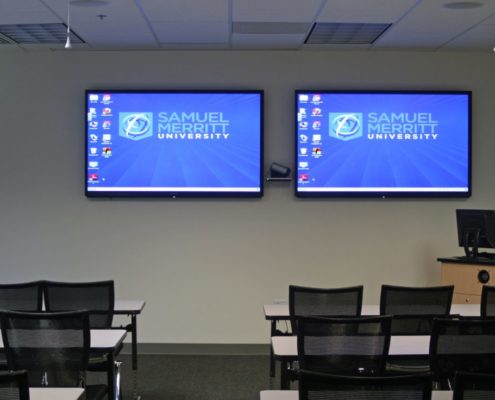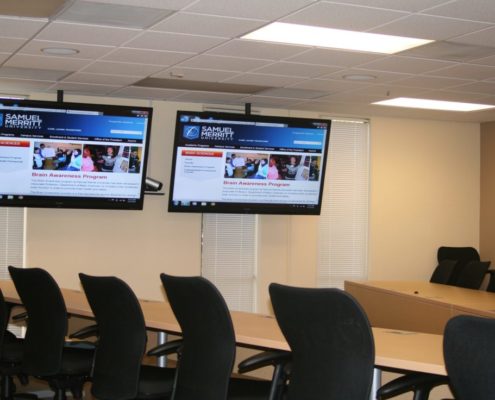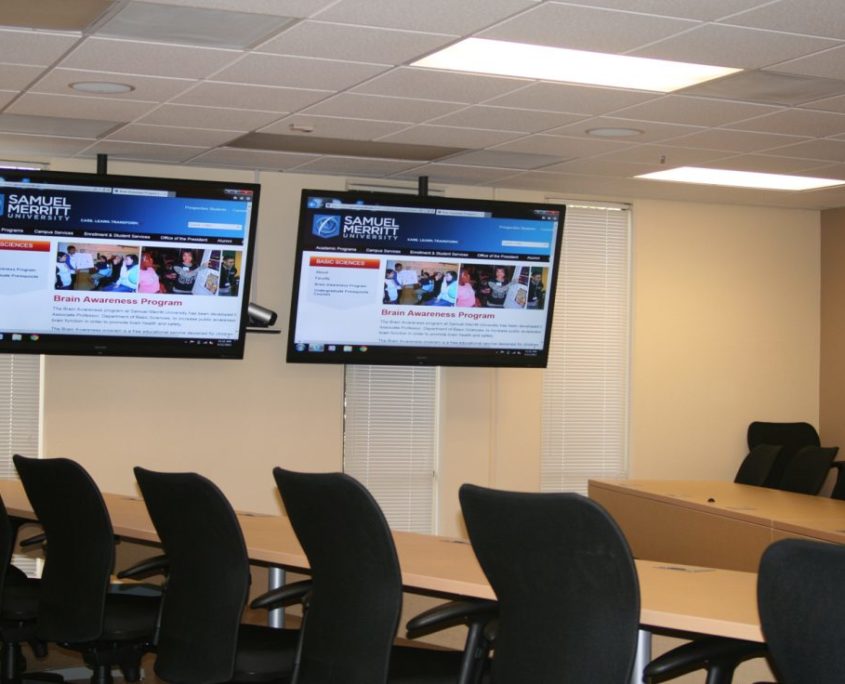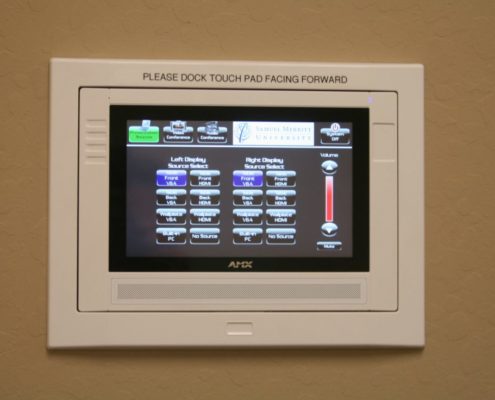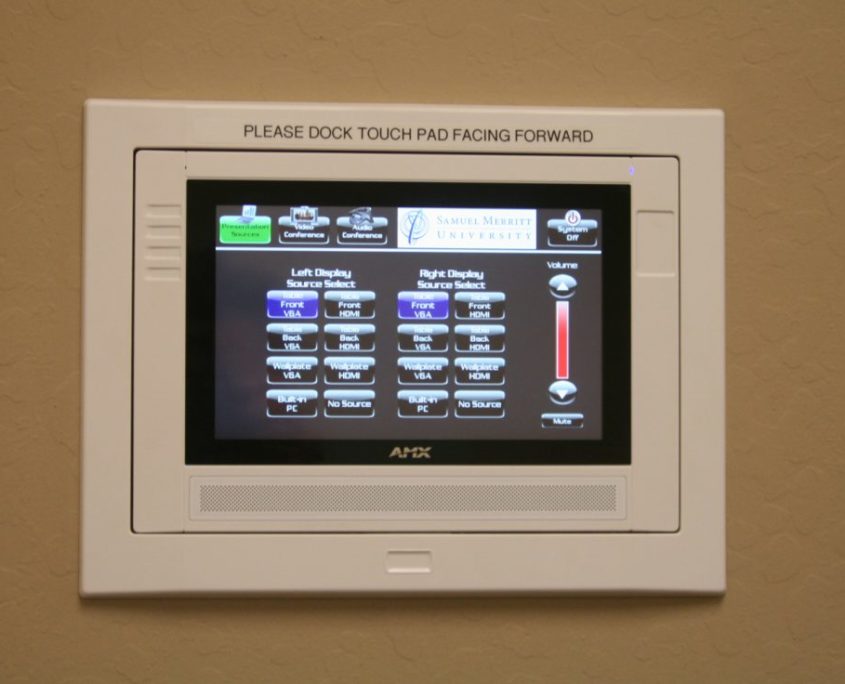Samuel Merritt University
User-Friendly Video Conferencing Systems with Remote Monitoring Capabilities
Samuel Merritt is a private university based in Oakland, CA that engaged Diversified to design and install video conferencing rooms for its campuses in Sacramento and San Mateo. The goal for the design in both locations was easy-to-use video conferencing systems that the IT department could remotely monitor. In San Mateo, Diversified installed a boardroom-style conference room with seating for 30. The team installed hard-wired boundary mics on the table, which is shaped like a ‘V’ to allow unobstructed camera views of all who are seated. They also included a wireless system with hand-held mics and lavalieres for presenters.
In Sacramento, Diversified installed a 48-seat classroom for lectures and faculty meetings. Here, table mics were not an option since tables are moved according to the needs of the class. Instead, Diversified used ClearOne Ceiling Microphone Arrays, which hang over the students and include three unidirectional microphone elements arranged to provide 360-degree coverage. Diversified used only four arrays for the entire room, and the sound quality is virtually identical to the table mics.
In each room, Diversified installed two 70” displays with conferencing systems based on Cisco codecs that provide 1080p resolution over an IP network. A PTZ camera is mounted between the displays to capture images of the students and another on the back wall to capture images of the instructor. To optimize audio, the team included a Biamp processor for mixing, graphic equalization, filtering, and the echo cancellation that’s critical to a room-to-room call. “Students are able to collaborate anywhere within the classroom, with no limitations. The sound system provides the flexibility to speak freely,” says Marcus Walton.
AMX touch screens give instructors visual operating menus for every system, from volume levels to camera controls. For video calls, the system connects automatically without instructor input. “We add each class to the schedule and the systems turn themselves on and make the connection. They’re ready when the instructors and students walk into the classroom,” says Blair Simmons, Director of IT Services. Given the possibilities for error, the IT department monitors each video class and local uses.

